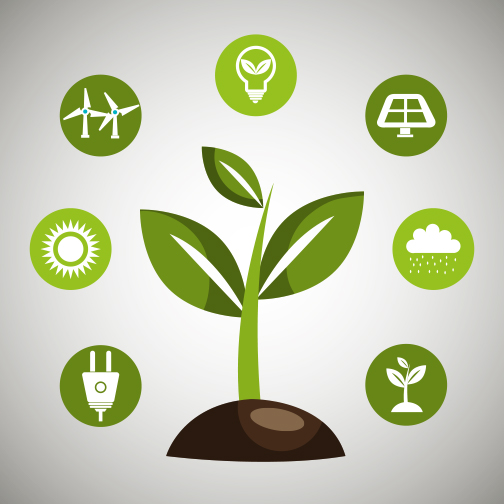
By Helen Chang
Sustainability Analyst
Sustainable Investment Group (SIG)
The use of renewable energy has been increasing internationally. In America, the consumption of renewable energy has increased 6.7% from 2013 to 2016. According to research conducted by NREL, the U.S will be able to generate 80% of its electricity from renewable energy by 20504. This result might be optimistic, but the increase of consumption of clean energy is happening. Thus, SIG would like to share some knowledge about clean energy and what it will look like in this country.
What is renewable energy?
Defined by Natural Resources Canada, ‘renewable energy is derived from natural processes that are replenished at a rate that is equal or faster than the rate at which they are consumed’3. For example, solar energy, wind energy, biomass, geothermal, hydropower, and biofuels are all examples of renewable energies.
What is the U.S.’s current energy source?
According to the U.S Energy Information Administration, 78% of U.S energy consumption in 2016 was provided by fossil fuels: petroleum, natural gas, and coal. On the other hand, nuclear power accounted for 10% of the energy supply, and renewable energy made up 12%1.
Why renewable?
 The Traditional Energy Supply Harms the Planet and the People
The Traditional Energy Supply Harms the Planet and the People
Fossil fuels were formed from buried remains of living organisms from millions of years ago, thus nonrenewable: they will be used up at some point. At the same time, the use of fossil fuels can also lead to severe air pollution problems as it releases carbon dioxide, nitrogen dioxide, carbon monoxide, etc2.
Renewable Energy is better for the environment, public health, economy, local development, and national securities5.
Renewable energy produces much less environmental impacts. First of all, it is inexhaustible: once we implant the generator, the nature will do its work consistently. Many of the renewable energy sources do not even produce greenhouse gases nor harmful gases at all. Additionally, most renewable energy plants are built locally, which reduces the cost of transportation, encourages the local economy, and provides reliable energy with stable prices. At the same time, the growth of local renewable energy decreases the U.S’ reliance on importing petroleum, which secures national energy supply.
What clean energy can the U.S utilize?
Different states in the U.S have different geographical advantages in terms of implementing renewable energies. For example, the East coast can utilize the offshore wind to produce wind energy, the South East can use biomass as well as geothermal, and California can maximize the use of solar energy. The U.S has great advantages of implementing different clean energy and each state can supply themselves sufficiently.
How to be ‘renewable’?
Different stakeholders can all contribute to the growth of renewable energy in America.
- For those in authority roles, funding and regulations will be most effective.
- For researchers, detailed studies and assessments on available clean energy in different regions are important for the implementation.
- For property managers, purchasing clean energy will encourage the growth of renewable energy and earn 1-6 credits for LEED certification simultaneously.
- For individuals, an energy and economic efficient way is to purchase an alternative fuel vehicle. At the same time, the installation of solar powered electronic (such as water heaters) will also help.
Most importantly, the decrease of the use of energy is as crucial as how the energy is produced: walk more, take public transportation, turn the AC off, turn the light off, and other minor changes in daily habits will reduce the energy burden significantly if everyone participates!
Source:
- https://www.eia.gov/energyexplained/?page=us_energy_home
- https://www.conserve-energy-future.com/disadvantages_fossilfuels.php
- http://www.nrcan.gc.ca/energy/facts/renewable-energy/20069
- https://www.nrel.gov/docs/fy13osti/52409-ES.pdf
- https://www.ucsusa.org/clean-energy/renewable-energy/public-benefits-of-renewable-power#.Ws-p8GaZMQl
© 2018 Sustainable Investment Group (SIG). All rights reserved.



